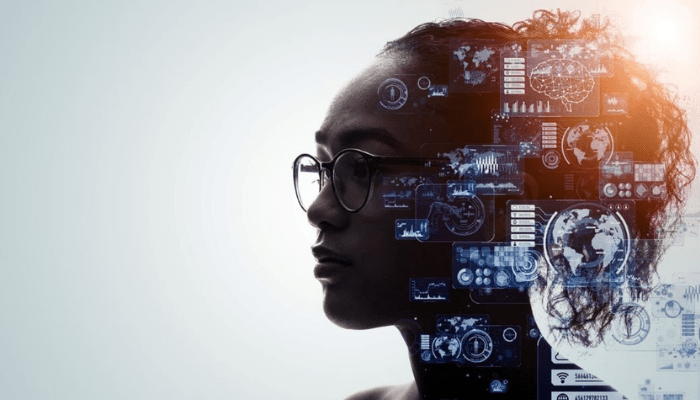Technology’s role in protecting women from domestic violence
In recent years, technology has become an increasingly vital tool in the fight against domestic violence. Digital resources, safety apps, and tech solutions have opened new avenues for women to seek help, gather evidence, and stay safe from harm. This article will explore the multifaceted role of technology in domestic violence protection and how it empowers women in vulnerable situations.
Understanding the Impact of Domestic Violence
Domestic violence is a pervasive issue that affects millions of women worldwide. It encompasses physical, emotional, sexual, and financial abuse within intimate relationships. The consequences of such violence can be devastating, leading to long-term psychological trauma, injury, or even death.
Traditionally, domestic violence has been a silent battle for many women, with limited means of escape or support. However, the integration of technology into this realm has begun to change the narrative, offering new forms of digital defence and support.
The Need for Discreet and Accessible Solutions
Women facing domestic violence often require discreet methods to seek help without alerting their abuser. Technology provides anonymity and a way to access information and resources without raising suspicion. The ability to use a smartphone or computer to reach out for support can be a lifeline for those in dangerous situations.
Tech Solutions for Protection and Support
The digital age has brought forth numerous tech solutions aimed at assisting women experiencing domestic violence. These range from safety apps to online platforms offering legal advice and emotional support.
Safety Apps
Safety apps have become crucial in helping women to plan their escape and find immediate help when needed. Applications such as Aspire News, and bSafe are designed to look inconspicuous on the phone but have hidden functionalities. They can send emergency messages to trusted contacts, share the user’s location, and even record audio or video discreetly.
Digital Resources and Hotlines
Online resources provide information on local shelters, legal rights, and ways to cope with abuse. Websites and hotlines, often operated by non-profit organizations, offer a confidential means to seek advice and support. The National Domestic Violence Hotline, for instance, offers both a phone line and an online chat service.
Social Media and Awareness Campaigns
Social media platforms have been utilized to raise awareness about domestic violence and to create online communities where survivors can share their stories and find solidarity. Hashtags and campaigns like #MeToo have given visibility to the issue, encouraging more women to come forward and seek help.
Navigating the Risks of Technology
While technology can be a powerful ally, it is not without its risks. Abusers can exploit technology to monitor, harass, or intimidate their victims. Therefore, it is crucial for women to understand digital privacy and security measures.
Digital Stalking and Surveillance
Abusers may use spyware, GPS tracking, or social media to keep tabs on their victims. Women need to be educated about these risks and learn how to secure their devices, use privacy settings, and check for unauthorized software.
Ensuring Privacy and Security
Privacy and security should be at the forefront of any tech solution for domestic violence. Apps and resources must be designed with the understanding that they may be accessed by individuals who are under surveillance by an abuser.
Legal Implications and Evidence Gathering
Technology not only offers immediate protection but also aids in the legal pursuit against abusers. Digital evidence can play a significant role in court cases, providing tangible proof of abuse.
Collecting Evidence
Smartphones and other devices can be used to document incidents of violence discreetly. Photos, videos, text messages, and emails can all serve as evidence. However, it’s essential to do so safely and to be aware of the legalities surrounding evidence gathering.
Technology and the Legal System
The legal system is increasingly recognizing digital evidence in cases of domestic violence. Tech tools that help compile and organize evidence can be invaluable for lawyers and law enforcement in building a solid case.
Education and Empowerment through Technology
Education is a powerful tool in combating domestic violence. Technology provides access to educational resources that empower women to understand their situation, rights, and the steps they can take to protect themselves.
Online Courses and Workshops
Organizations often offer online courses and workshops on topics such as self-defence, legal rights, and emotional healing. These resources can be accessed from anywhere, providing flexibility for those who may not be able to attend in-person sessions.
Empowering Women to Use Technology Safely
It’s not just about providing the tools but also teaching women how to use them effectively and safely. Educational initiatives should include digital literacy, focusing on secure communication, privacy, and the responsible use of technology.
The Future of Technology in Domestic Violence Protection
As technology evolves, so do the opportunities to enhance protection for women facing domestic violence. The future may bring more sophisticated solutions, such as AI-powered risk assessment tools, smart home devices with enhanced security features, and even virtual reality environments for training and therapy.
Innovations on the Horizon
Innovations in technology continue to surface, offering new ways to protect and support survivors of domestic violence. For example, wearables that can detect physical stress and send alerts or apps that use artificial intelligence to provide personalised safety plans are being developed.
Collaboration with Tech Companies
Collaborations between non-profits, advocacy groups, and tech companies are essential to develop effective and safe solutions. These partnerships can leverage the expertise of technologists to create products that cater specifically to the needs of those affected by domestic violence.
Conclusion
Technology plays a significant role in protecting women from domestic violence. From safety apps to digital resources and legal support, tech solutions offer discreet and accessible help. However, the use of technology must be balanced with education on privacy and security to ensure that these tools do not become double-edged swords.
As we continue to innovate and integrate technology into domestic violence protection strategies, it is imperative to prioritise the safety, autonomy, and empowerment of survivors. With the proper support and resources, technology can be a powerful ally in the fight against domestic violence and a beacon of hope for countless women seeking a way out of abusive situations.
—
Content Created on 04/05/2024 by
John Pititto
Managing Director
The Original PC Doctor






















































































